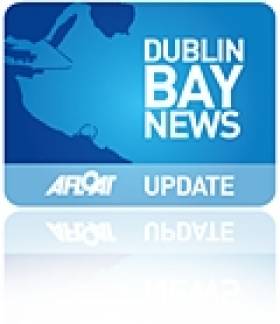Displaying items by tag: Event news
Heritage Week: Maritime Lectures In Dun Laoghaire
12.30 – 1.30 pm. Neutral Ireland's Role in the Sinking of the Bismarck, May, 1941 By Dr. Michael Kennedy, Executive Editor, Documents on Irish Foreign Policy, Royal Irish Academy.
1.30 – 2.30 pm. Traditional Boats of Ireland. - Wooden workboats from all the Maritime Counties of Ireland. By Darina Tully, Lecturer and Maritime Archaeologist.
2.30 – 3.30 pm. Too Many Bags in the Lifeboat. A Lifeboat Tragedy at Bray 1876 By James Scannell, Lecturer and P.R.O of the Old Dublin Society.
4.00 – 5.00 pm. Maritime Guinness, The Ships, Yachts and Barges of the Guinness Dynasty. By Dr. Edward Bourke, Diver, Maritime Historian and Author of "Guinness, the Family, the Business and the Black Stuff"
5.00 – 6.00 pm. Ireland's Armada Heritage. The Story of the Spanish Armada of 1588. The discoveries of the wrecks on the Irish Coast and the recovery of artifacts. By Cormac Lowth, Lecturer, Author and Diver.
Further information Barney Yourell 087 900 7466 No seminar charge – donations accepted. Information in general on the Maritime Institute of Ireland can be found on http://www.mariner.ieand for other nationwide events of the Heritage Week visit www.heritageweek.ie
- Events
- Dun Laoghaire Harbour
- M.I.I.
- Dun Laoghaire Harbour News
- Event news
- National Heritage Week
- Heritage Week
- Maritime Lecture Seminar
- Spanish Armada
- Eblana Centre Dun Laoghaire
- Maritime Insitute of Ireland
- Bismarck
- Traditional Irish wooden boats
- Guiness ships
- Guinness barges
- Darina Tully
- Irish heritage boats
'Seafront Memorials' Tours of Dun Laoghaire Harbour
The tour which is free starts at the meeting point of the Queen Victoria Fountain which too forms part of the tour alongside the George VI memorial
and the Christ the King monument.
The outdoor event is part of the 'Summer of Heritage' which is organised by Dun Laoghaire-Rathdown County Council. The initiative is now in its fourth year and this year's highlight of the programme are tours of the newly renovated Seapoint Martello tower.
The coastal structure has been restored and is a fine example of these 19th century defensive forts, built along the coast to defend during the Napoleonic wars.
This summer also sees Carrickbrennan graveyard feature for the first time, the resting place of many sailors lost in maritime disasters since the 17th century.
Sightseeing along 'The Metals', a historic pathway that linked the quarry in Dalkey to the harbour in Dún Laoghaire also returns in the programme due to its popularity last year.
To read more about the the Summer of Heritage other free events in the arts, literature, sports, music and for the family, go to www.dunlaoghaire.ie/summer-of-heritage/ and www.dlrevents.ie/heritage11.html
- Events
- RNLI
- dlrcoco
- Dublin Bay News
- Dun Laoghaire Harbour
- Coastal Notes
- Dun Laoghaire News
- Seafront Memorials
- Guided Tours
- DunLaoghaireRathdown County Council
- DLR
- DLR events
- Martello Towers
- Seapoint Martello Tower
- The 'Metals'
- Queen Victoria Fountain
- King George VI monument
- Crimean War cannon
- Event news
- Napoleon
- Napoleonic Wars
- 1895 Dun Laoghaire Lifeboat Disaster
- RNLI Dun Laoghaire
- Christ the King monument
- Summer of Heritage































































